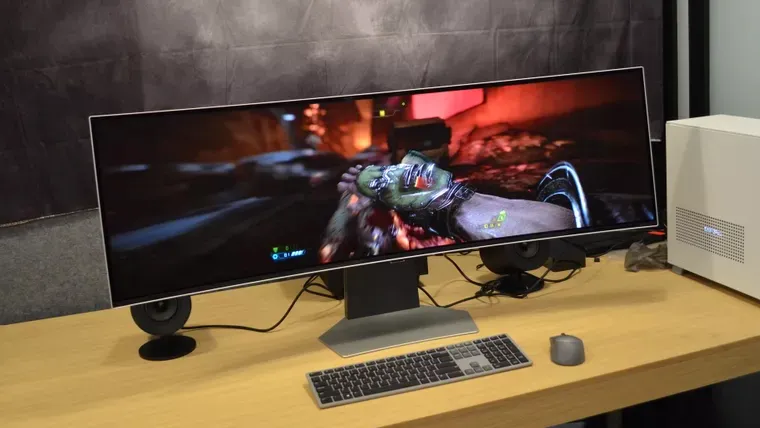In the world of modern connectivity, few ports have caused more confusion than USB-C and Thunderbolt 4. At first glance, they may appear identical—but under the hood, the differences can be critical, especially if you’re juggling multiple devices or working in a high-performance environment.
So, what is the difference between Thunderbolt 4 and USB-C? And more importantly, if you’re working across a Thunderbolt-enabled laptop and a desktop, what’s the best KVM switch to unify your workspace?
Let’s break it down.
What is Thunderbolt 4?
Thunderbolt 4 is Intel’s latest standard in high-speed data, video, and power delivery over a single compact port. It builds upon the capabilities of Thunderbolt 3 and brings additional requirements and improvements, including:
-
40 Gbps Bandwidth – Consistent, bidirectional speed for ultra-fast data transfer.
-
Support for Dual 4K Displays – Or one 8K display.
-
PCIe at 32 Gbps – Perfect for external GPUs, storage devices, and docking stations.
-
USB4 Compatibility – Thunderbolt 4 ports are fully compatible with USB4 and USB-C.
-
Charging + Power Delivery – Up to 100W power delivery to charge laptops and devices.
-
Daisy Chaining – Connect multiple devices with just one cable.
What makes Thunderbolt 4 stand out is its minimum requirement guarantee—every certified TB4 port must support the full range of features above. No more guessing what your port can or can’t do.
Thunderbolt 4 vs. USB-C: What’s the Real Difference?
Visually, Thunderbolt 4 and USB-C use the same reversible connector. But their capabilities aren’t equal:
| Feature | USB-C (Typical) | Thunderbolt 4 |
| Connector Type | USB Type-C | USB Type-C |
| Max Data Speed | Up to 80 Gbps (USB 4) | 40 Gbps (80Gbps with Thunderbolt5) |
| Display Support | Varies, often 1 display | Dual 4K or 1x 8K |
| Power Delivery | Optional, varies | Required, up to 100W |
| Daisy Chain Support | Not supported(without DP Alt) | Supported (up to 6 devices) |
| PCIe Tunneling | No | Yes |
| Guaranteed Features | No | Yes (certified features) |
In short:The Thunderbolt borrows the appearance of the USB-C connector.all Thunderbolt 4 ports are USB-C, but not all USB-C ports are Thunderbolt 4.
If you rely on high-performance peripherals, dual monitors, or external storage, Thunderbolt 4 offers a significant edge.

Why a KVM Switch Is a Must-Have for Multi-Device Users
Let’s say you use a MacBook Pro for design work and a Windows desktop for gaming or coding.Both need link to a keyboard、mouse and two monitor, and you want to:
-
Share a dual-monitor setup
-
Use one mechanical keyboard and mouse
-
Seamlessly switch between the two with a single button press
That’s where a KVM switch (Keyboard-Video-Mouse switch) comes in. A high-performance KVM eliminates the clutter and lets you control multiple systems using a single set of peripherals—without unplugging a single cable.
But not all KVMs are created equal. For Thunderbolt 4 or full-featured USB-C setups, you’ll need something robust and compatible.
Introducing TESmart’s HDC202-X24: A USB-C KVM That Handles Thunderbolt Workflows
If you're looking for a future-proof KVM switch that works beautifully across laptops, desktops, Macs, and PCs—all with Thunderbolt or USB-C—look no further than TESmart’s HDC202-X24.
Key Features:
-
Thunderbolt KVM Switch – Connect a USB-C devices(Thunderbolt-compatible) and a desktop.
-
Dual Monitor Support – Output to two 4K@60Hz displays with extended mode.
-
USB 3.0 Docking Hub – Share fast peripheral access between systems.
-
Button, Hotkey, and Remote Switching – Choose your workflow style.
-
EDID Emulation & Keyboard/Mouse Pass-Through – Zero-delay input with complex devices (e.g., mechanical keyboards).
-
Compact, Sleek Design – Desk-friendly without compromising functionality.
Whether you’re switching between a Mac Studio and a Windows laptop, or a gaming rig and a work laptop, the HDC202-X24 makes the transition seamless—keeping your setup clean and efficient.



Final Thoughts
Thunderbolt 4 isn’t just faster USB-C—it’s a comprehensive connectivity standard for high-performance computing. If you’re serious about productivity and efficiency across multiple Thunderbolt or USB-C-enabled systems, pairing them with a compatible KVM like TESmart’s HDC202-X24 is a no-brainer.
Say goodbye to constant cable swapping and hello to a smooth, unified workflow.
Want to upgrade your Thunderbolt setup? 👉 Explore the TESmart HDC202-X24 KVM Switch






